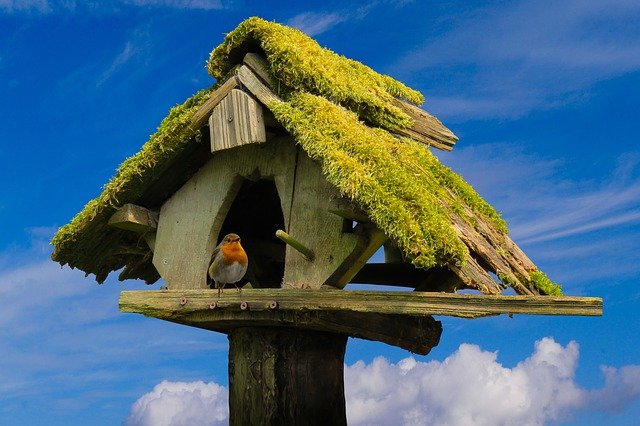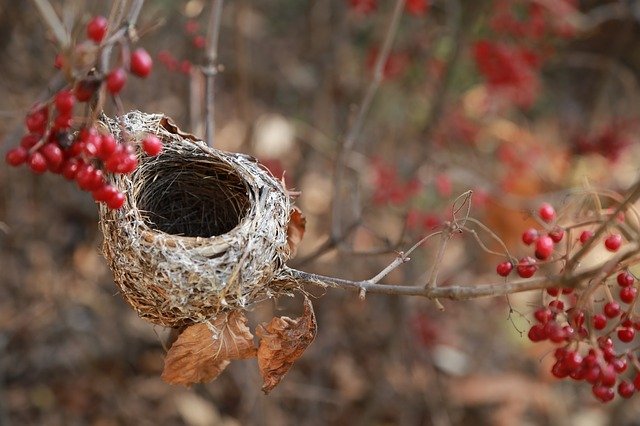Factors to Consider When Attracting Birds to a Birdhouse
There is hardly nothing more fulfilling than staring out your window seeing birds nesting in a little birdhouse outside your home. It’s a great experience to see a couple of young birds as they discover this little, comfortable haven and begin to make it their home.
Over time, you will see these birds come in and out of the birdhouse, and ultimately they will lay eggs in the birdhouse, resulting in the formation of a family. It’s a fantastic sensation to have these small animals share your house with you, and it will bring a lot of pleasure to your heart.
A lot of people construct birdhouses in their backyards and other open areas in the hope of attracting some of these magnificent animals. However, saying it is much simpler than doing it.
A birdhouse, for example, is a fantastic method to give a safe habitat for these flying animals if you live near a forested area. However, it is not as straightforward as it seems.
When you set up a birdhouse and wait for many days, only to discover that there are no birds coming in, it may be extremely discouraging.
It may be rather monotonous to sit in front of the birdhouse and watch nothing happen around you.
It’s also extremely depressing to watch all of your hard work go down the toilet in this manner. You could be questioning what you did wrong and whether or not animals are drawn to your location.
You must realize, however, that enticing birds to a birdhouse is more of an art than a science. There are a number of considerations to bear in mind, particularly when it comes to ensuring that they remain in place for the long run.
A good birdhouse installation is more complicated than just placing one at the end of a pole and waiting for the birds to come.
There are a variety of things that you may be doing incorrectly without even recognizing it, so it’s critical that you adopt a balanced approach. Here are a few things you should be aware of when it comes to attracting birds to a birdhouse.
Factors to Consider When Attracting Birds to a Birdhouse
Step 1: Choose an Appropriate Nesting Site
The placement of the birdhouse is one of the most important considerations that you must make. Because you must realize that birds are quite choosy animals, especially when it comes to constructing a nest, finding a proper nesting spot is critical.
A lot of birds are quite picky about where they want to spend their time until their chicks are old enough to fly. Their tastes could differ depending on the breed. Most of the time, birds search for a safe and secure location that is well-sheltered and concealed from the elements of the outside world.
There are distinct needs for each species, and you must take that into consideration. For example, if you see a large number of bluebirds in your neighborhood, the optimum place for their nest will be an area bordered by open fields.
This is due to the fact that bluebirds want to have an unobstructed line of sight since they often feed their offspring on insects and other crawlers.
An example of the full opposite is a chickadee, which is a highly common bird across the nation. People who live in a thicket or amongst a lot of bushes like to live in homes that are constructed in the environment. Chickadee birdhouses are suitable for placement in areas where there are a large number of trees clustered in a small space.
When it comes to apartment buildings, the purple martin, one of the most popular and beautiful birds you will ever see, favors buildings with a pole in the middle. It is best to place the birdhouse on an open lawn or in a vast field if you have such a space.
As a result, the first step is to do thorough study on the birds that live in your region before deciding on the kind of birdhouse to construct in your backyard.
The majority of people merely look at the open apartment birdhouses that are attached to a pole, and since they seem to be so lovely and idyllic, they decide to create them in their own homes. In any case, it’s not a smart idea, particularly if you have no clue what type of birds live in your neighborhood.
Designing a House Properly, Part 2
The design of the home will be discussed next. The design of the birdhouse is crucial since, as previously said, each bird type has its own preferences when it comes to living conditions. In the same way that many other birds like to live in groups, purple martins prefer to live in apartment type birdhouses.
In contrast, house wrens prefer smaller dwellings and do not tolerate the presence of other wrens in the vicinity. It is preferable for bluebirds to live in single-room structures, which must be spaced at least 75 yards away from one another.
Number 3: A Good Match
The installation of the birdhouse is a pretty ordinary item that most people miss. You must ensure that the birdhouse you construct is appropriate for the kind of birds that you want to keep in it.
Keep in mind that the birdhouse will be occupied very soon, therefore you must build certain that it is not either too large or too little for the birds. The obvious thing to remember in this situation is that a bigger bird will demand a larger home, whilst a smaller bird would be OK with a smaller one.
A house wren will be more than happy with a home that is 8 inches tall and has a foundation that is 4 by 6 inches in dimensions. A chickadee, on the other hand, will thrive in an 8-inch home with a 5-by-5-inch foundation and a height of 5 inches.
Given their somewhat larger size, bluebirds need a little more space. In order to complete this project, you will need a birdhouse with a minimum height of 10 inches and a foundation of 5.5 by 5.5 inches.
If you wish to maintain larger birds, such as an owl, you will need a birdhouse with a minimum height of 24 inches and a foundation that is about 10 by 10 inches.
The dimensions of the entrance hole are as follows:
An additional consideration is the diameter of the entry hole. It is not necessary to provide an extremely large entrance for house wrens; a hole of around two inches in diameter is sufficient. The hole cannot be too large, since other birds may attempt to battle for ownership of the region if the hole is too large.
The skilled nesters must be kept out, and here is where you must be vigilant. Then, for larger birds, a larger entrance is required. You will want to choose an elliptical entryway that is around 4 by 3 inches in size if you have a screech owl as a pet.
The creature will have plenty of room to pass through.
Atop that, the circular design of the structure inhibits other creatures, such as raccoons, from navigating through it.
These are just a few of the more minor considerations that you should bear in mind while constructing a birdhouse for your yard. In order to attract these amazing animals to your home, you cannot just put one up and hope for the best. You must plan ahead of time.
In order to provide a secure and pleasant environment for the birds, it is essential that you consider these little details. Also, avoid getting too near to the birdhouse every now and again, since they may flee if they become aware of your presence.





